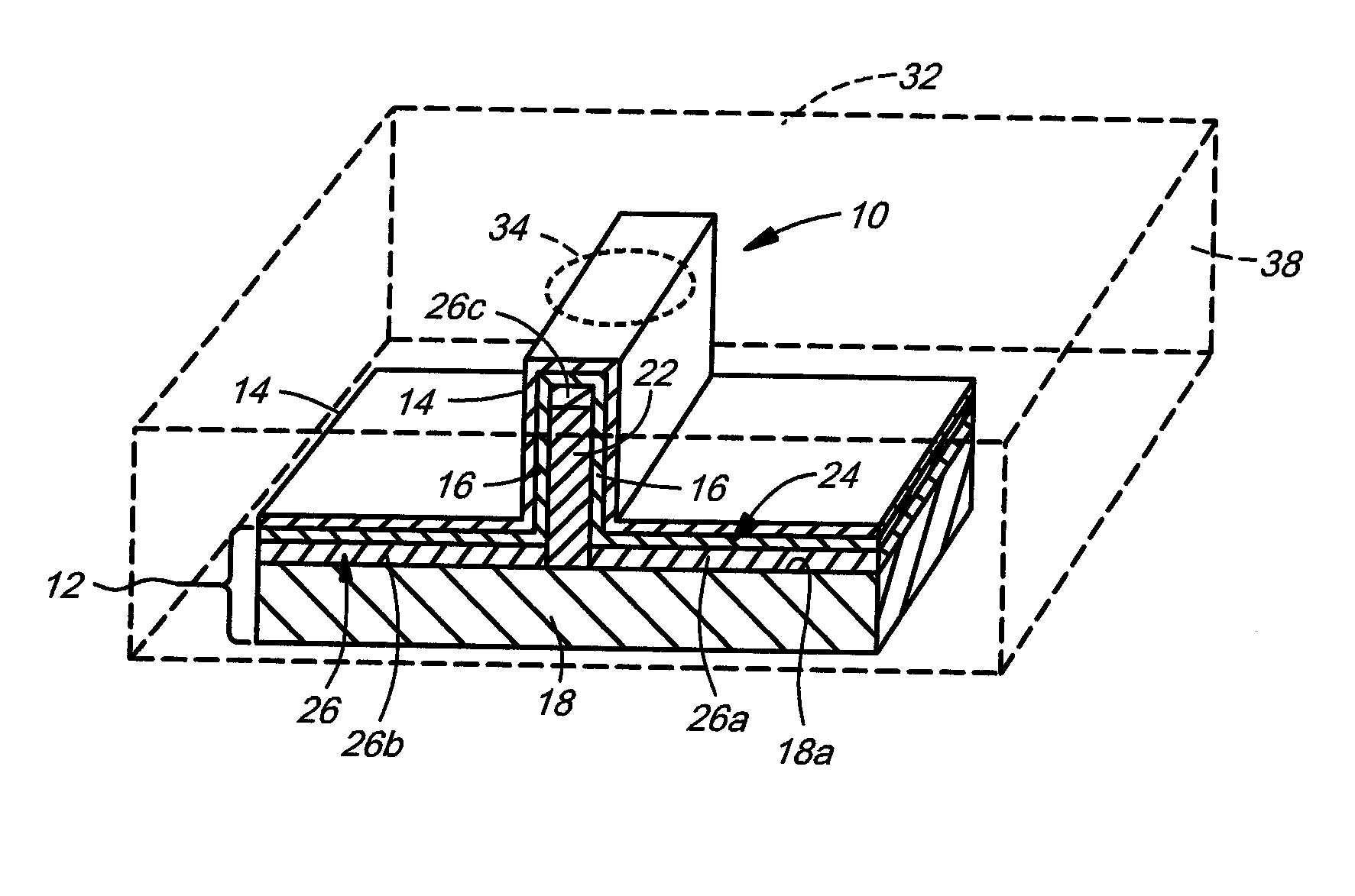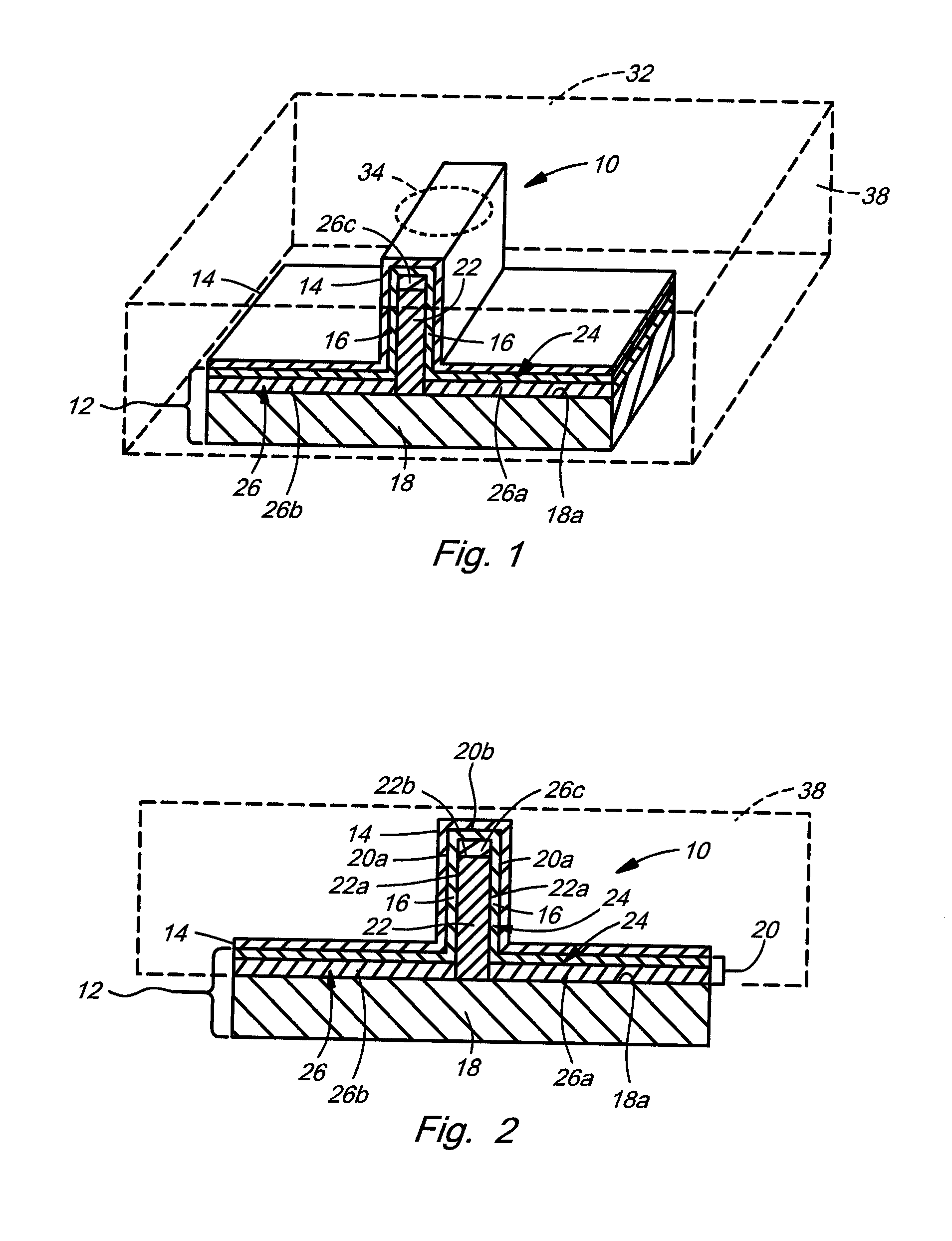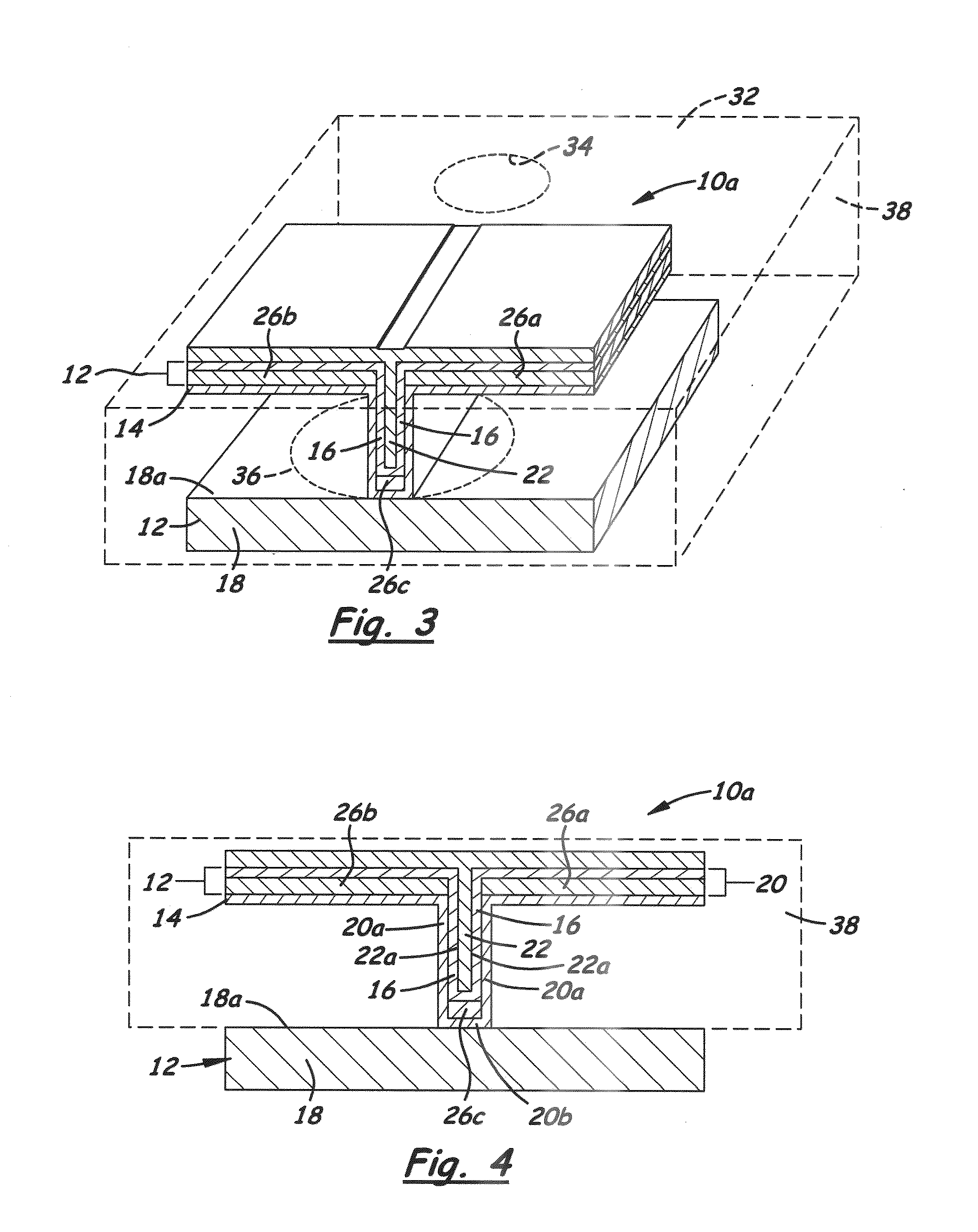Fin-shaped heater stack and method for formation
a heater stack and fin-shaped technology, applied in printing and other directions, can solve the problems of dramatic decrease, thermal limitation of printing heads that try to achieve this goal, and reducing fire frequency
- Summary
- Abstract
- Description
- Claims
- Application Information
AI Technical Summary
Benefits of technology
Problems solved by technology
Method used
Image
Examples
Embodiment Construction
[0018]The present invention now will be described more fully hereinafter with reference to the accompanying drawings, in which some, but not all embodiments of the invention are shown. Indeed, the invention may be embodied in many different forms and should not be construed as limited to the embodiments set forth herein; rather, these embodiments are provided so that this disclosure will satisfy applicable legal requirements. Like numerals refer to like elements throughout the views.
[0019]Referring now to FIGS. 1-4, there are illustrated exemplary embodiments of a vertical fin-shaped heater stack, generally designated 10 and 10a. FIGS. 1 and 2 illustrate the upright vertical configuration of the fin-shaped heater stack 10. FIGS. 3 and 4 illustrate the inverted vertical configuration of the fin-shaped heater stack 10a. Each of the upright and inverted vertical configurations of the heater stacks 10 and 10a includes first and second strata 12, 14. The first strata 12 of both heater st...
PUM
| Property | Measurement | Unit |
|---|---|---|
| width | aaaaa | aaaaa |
| thickness | aaaaa | aaaaa |
| width | aaaaa | aaaaa |
Abstract
Description
Claims
Application Information
 Login to View More
Login to View More - R&D
- Intellectual Property
- Life Sciences
- Materials
- Tech Scout
- Unparalleled Data Quality
- Higher Quality Content
- 60% Fewer Hallucinations
Browse by: Latest US Patents, China's latest patents, Technical Efficacy Thesaurus, Application Domain, Technology Topic, Popular Technical Reports.
© 2025 PatSnap. All rights reserved.Legal|Privacy policy|Modern Slavery Act Transparency Statement|Sitemap|About US| Contact US: help@patsnap.com



